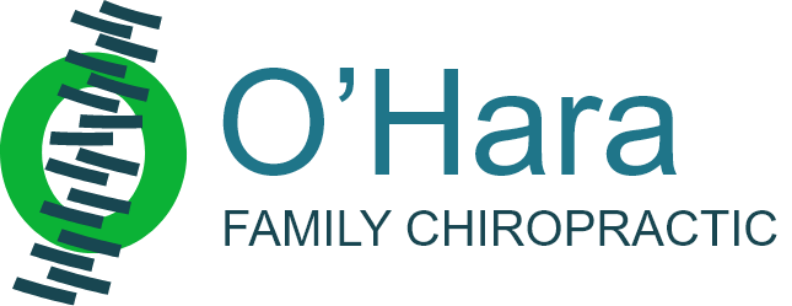Knee Pain, L3 Subluxation & Chiropractic Decompression Therapy
Knee pain is one of the most common musculoskeletal complaints in chiropractic care. While it’s often assumed that knee discomfort stems solely from the joint itself, the root cause may be related to spinal issues—particularly subluxations in the lower back. Understanding the connection between spinal alignment, knee function, and overall biomechanics can help patients find effective, long-lasting relief.
What Is a Subluxation?
A subluxation is a partial misalignment or restricted movement of a vertebra or joint. When a vertebra in the lower spine, such as L3, becomes subluxated, it can interfere with nerve signals traveling to the muscles, ligaments, and joints of the lower body.
This miscommunication can lead to pain, inflammation, and altered biomechanics, affecting both the lower back and the knees.
Subluxation can also occur directly in the knee joint. Knee subluxation refers to partial displacement of the kneecap or joint, which may cause:
-
Pain or discomfort
-
Instability or a feeling the knee “gives out”
-
Swelling or inflammation
-
Chronic issues from repetitive stress or compensation due to spinal misalignment
How L3 Subluxation Affects the Knee
The L3 vertebra is part of the lumbar spine and plays a key role in supporting the lower back, hips, and lower extremities. Nerves exiting the L3 segment contribute to muscle control and sensation in the thigh, knee, and surrounding areas.
When L3 is subluxated:
-
Nerve interference reduces proper muscle activation around the knee
-
Imbalanced biomechanics develop, causing one leg to bear more weight and increasing risk of overuse injuries
-
Compensatory patterns form, creating tension in surrounding muscles, tendons, and ligaments, which makes the knee more prone to subluxation or irritation
Patients often describe knee pain that worsens after activity, stiffness in the morning, or discomfort when walking or climbing stairs. Because the underlying issue may originate in the spine, addressing only the knee may not fully resolve the problem.
Chiropractic Decompression Therapy for Knee and L3 Subluxation
Chiropractic decompression therapy is a non-invasive treatment that gently stretches the spine or joint to relieve pressure, restore alignment, and improve circulation.
For the L3 vertebra:
-
Restores proper spacing between vertebrae, reducing pressure on nerves influencing knee function
-
Improves nerve communication to the quadriceps, hamstrings, and other stabilizing muscles
-
Reduces pain, stiffness, and inflammation in the lower back and knee
-
Restores natural movement patterns, lowering the risk of future injury
For the knee joint:
-
Realigns the knee and relieves pressure on surrounding soft tissues
-
Improves range of motion and reduces inflammation in ligaments and tendons
-
Strengthens muscles around the joint to prevent recurring subluxation
Many patients notice improvements in both knee stability and lower back comfort after several sessions. Unlike temporary pain relief treatments, chiropractic decompression addresses the underlying cause, promoting long-term healing and preventing further deterioration.
Complementary Care for Knee Pain
Chiropractic decompression therapy is most effective when combined with lifestyle and functional strategies:
-
Targeted exercises: Strengthen quadriceps, hamstrings, glutes, and core muscles to support knee alignment and relieve pressure on L3
-
Posture and movement training: Proper posture and ergonomics prevent spinal subluxations from recurring
-
Stretching and flexibility work: Gentle stretches for hip flexors, hamstrings, and calf muscles reduce tension contributing to knee pain
-
Activity modification: Temporary adjustments to exercise or sports routines help prevent aggravating the knee while healing occurs
When to See a Chiropractor
Seek professional evaluation if you notice:
-
Persistent knee pain that doesn’t improve with rest or traditional treatments
-
Stiffness or discomfort in the lower back, particularly around L3
-
Knee instability or a feeling the joint “gives out”
-
Pain radiating from the lower back into the thigh or knee
Early intervention can prevent chronic conditions, improve mobility, and reduce the likelihood of invasive treatments like surgery.
Final Thoughts
Knee pain and lower back issues are often interconnected. A subluxation in the L3 vertebra can compromise nerve function, alter muscle patterns, and contribute to knee instability or subluxation.
Chiropractic decompression therapy restores alignment, relieves pressure, and improves joint function. Combined with exercises, postural care, and lifestyle adjustments, patients can experience:
-
Lasting relief from pain
-
Enhanced mobility
-
Improved quality of life
If you are struggling with knee pain or lower back discomfort, scheduling a chiropractic evaluation can help determine whether subluxation or nerve interference is contributing to your symptoms—and guide you toward effective treatment.
